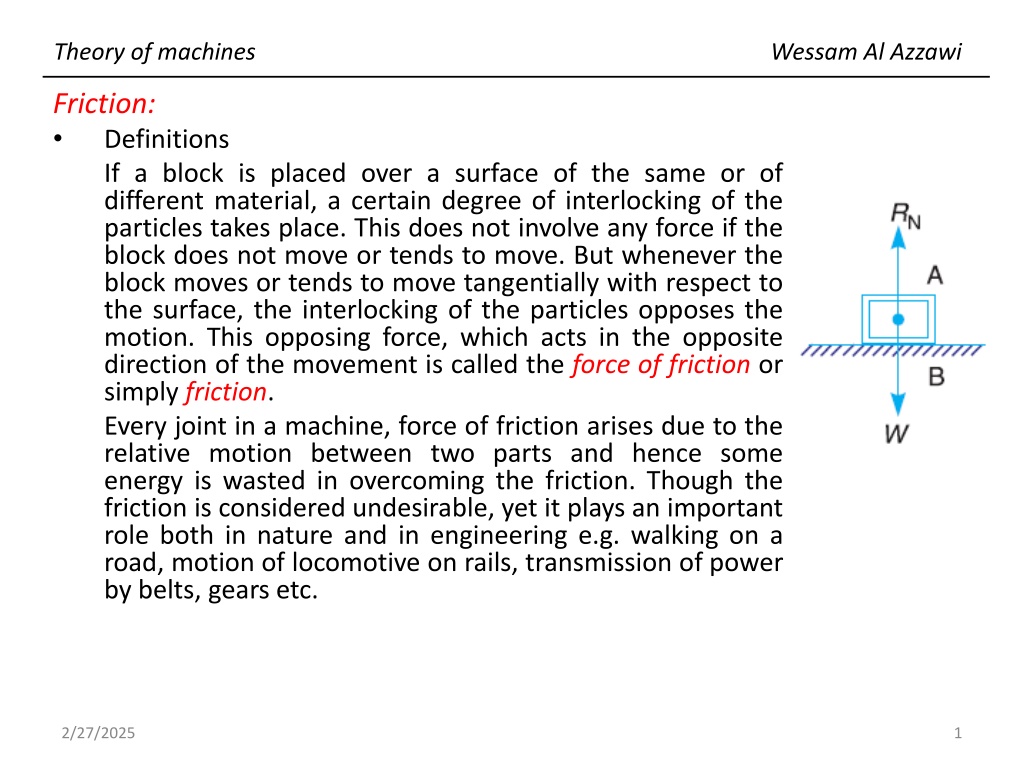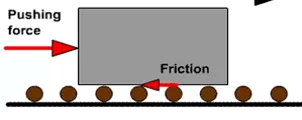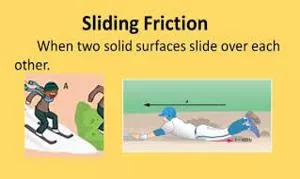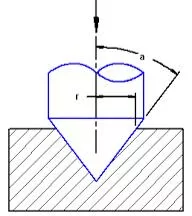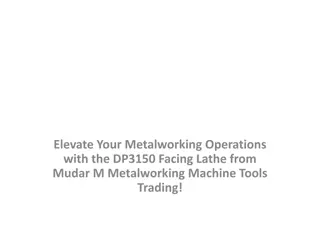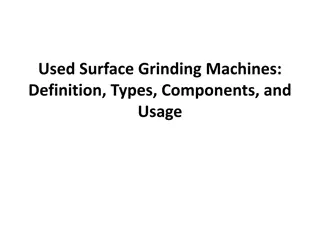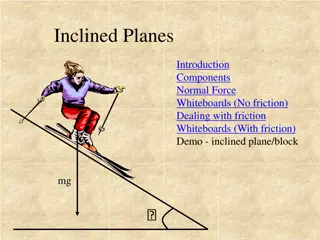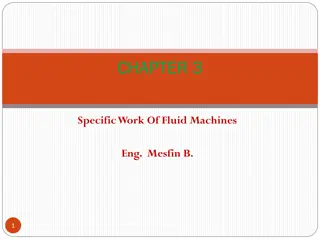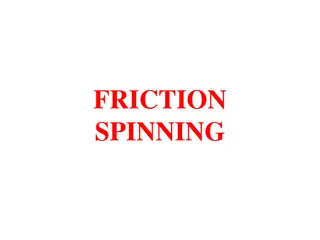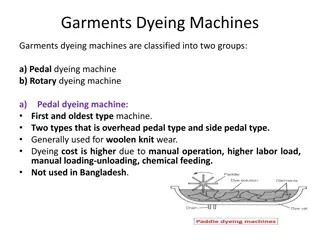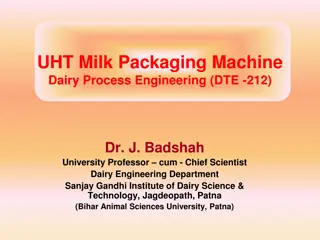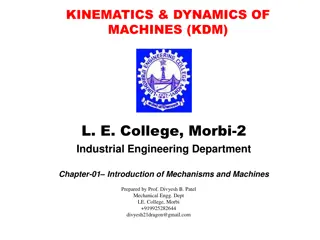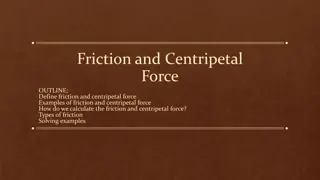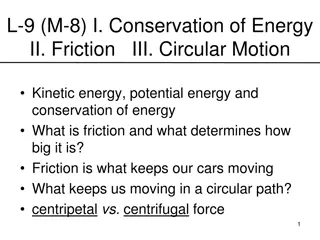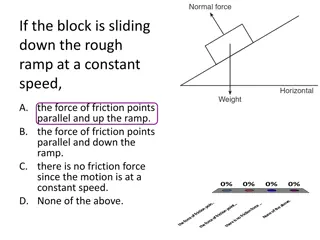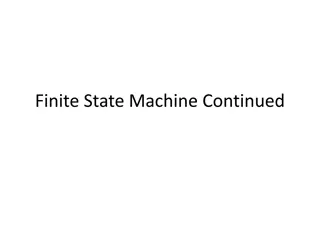Friction in Machines
Friction plays a crucial role in machine operations, with various types like static, dynamic, sliding, rolling, and pivot friction influencing performance. Learn about the laws governing static and dynamic friction, and the impact of surface roughness on friction forces in machine components.
Download Presentation

Please find below an Image/Link to download the presentation.
The content on the website is provided AS IS for your information and personal use only. It may not be sold, licensed, or shared on other websites without obtaining consent from the author.If you encounter any issues during the download, it is possible that the publisher has removed the file from their server.
You are allowed to download the files provided on this website for personal or commercial use, subject to the condition that they are used lawfully. All files are the property of their respective owners.
The content on the website is provided AS IS for your information and personal use only. It may not be sold, licensed, or shared on other websites without obtaining consent from the author.
E N D
Presentation Transcript
Theory of machines Wessam Al Azzawi Friction: Definitions If a block is placed over a surface of the same or of different material, a certain degree of interlocking of the particles takes place. This does not involve any force if the block does not move or tends to move. But whenever the block moves or tends to move tangentially with respect to the surface, the interlocking of the particles opposes the motion. This opposing force, which acts in the opposite direction of the movement is called the force of friction or simply friction. Every joint in a machine, force of friction arises due to the relative motion between two parts and hence some energy is wasted in overcoming the friction. Though the friction is considered undesirable, yet it plays an important role both in nature and in engineering e.g. walking on a road, motion of locomotive on rails, transmission of power by belts, gears etc. 2/27/2025 1
Theory of machines Wessam Al Azzawi Friction: Types of Friction 1. Static friction. It is the friction, experienced by a body, when at rest. 2. Dynamic friction. It is the friction, experienced by a body, when in motion. The dynamic friction is also called kinetic friction and is less than the static friction: Sliding friction. It is the friction, experienced by a body, when it slides over another body. Rolling friction. It is the friction, experienced between the surfaces which has balls or rollers interposed between them. Pivot friction. It is the friction, experienced by a body, due to the rotation as in case of foot step bearings. 2/27/2025 2
Theory of machines Wessam Al Azzawi Friction: Friction Between Unlubricated Surfaces Is the friction experienced between two dry and unlubricated surfaces due to the surface roughness, it is also known as dry or solid friction. limiting force of friction Also know as limiting friction 0 static friction limiting friction 2/27/2025 3
Theory of machines Wessam Al Azzawi Friction: Laws of Static Friction 1. Friction force is always opposite to that in which the body tends to move. 2. Friction force magnitude is exactly equal to the force, which tends the body to move. 3. The magnitude of the limiting friction (F ) bears a constant ratio to the normal reaction (RN) between the two surfaces. Mathematically: F/RN = constant Friction force is independent of the area of contact between the two surfaces. 4. 5. The friction force depends upon the roughness of the surfaces. 2/27/2025 4
Theory of machines Wessam Al Azzawi Friction: Laws of Dynamic Friction 1. Friction force is always opposite to the direction in which the body tends to move. 2. The magnitude of dynamic friction force bears a constant ratio to the normal reaction. It is slightly less than that in case of static friction. 3. For moderate speeds, the force of friction remains constant. But it decreases slightly with the increase of speed. 2/27/2025 5
Theory of machines Wessam Al Azzawi Friction: Laws of Solid (dry) Friction 1. Friction is directly proportional to the normal load. 2. Friction is independent of the area of the contact surface. 3. Friction depends on the materials of the contact surfaces. Laws of Fluid Friction 1. Friction is independent of the load. 2. Friction reduces with the increase of the temperature. 3. Friction is independent of the substances of the surfaces. 4. Friction is different for different lubricants. 2/27/2025 6
Theory of machines Wessam Al Azzawi Friction: Limiting Angle of Friction The magnitude of the friction is F = .W = .RN RN is the normal reaction. When the motion just begins, the body will be in equilibrium under the action of: 1. Weight (W) 2. Horizontal force (P) 3. Reaction (R) Reaction R must be equal and opposite to the resultant of W and P. R inclined at an angle to the normal reaction RN. ( is known as the limiting angle of friction). tan = F/RN = RN / RN = 2/27/2025 7
Theory of machines Wessam Al Azzawi Friction: Angle of repose If the angle is such that the body begins to move down the plane, then the angle is called the angle of repose. the body will move down the plane when the angle of inclination is equal to the angle of friction (i.e. = ). W sin , tends to slide the body down. W cos , perpendicular to the plane and balanced by the normal reaction (RN). The body will move when: W sin = F = .RN = .W cos tan = = tan or = 2/27/2025 8
Theory of machines Wessam Al Azzawi Friction: Minimum Force Required to Slide a Body For the equilibrium of the body A: RN + P sin = W RN= W P sin P cos = F = .RN Substituting the value of RN from equation (1), P cos = (W P sin ) = tan (W P sin ) ..(1) ..(2) = tan (x cos ) P cos .cos = W sin P sin .sin P cos .cos + P sin .sin = W sin ( cos . cos + sin .sin = cos ( )) For P to be minimum, cos ( ) should be maximum cos ( ) = 1 or = 0 or = Pmin = W sin 2/27/2025 9
Theory of machines Wessam Al Azzawi Friction: Example .1. A body, resting on a rough horizontal plane required a pull of 180 N inclined at 30o to the plane just to move it. It was found that a push of 220 N inclined at 30o to the plane just moved the body. Determine the weight of the body and the coefficient of friction. Slo. (a) F = 180 cos 30o= 180 0.866 = 156 N RN= W 180 sin 30o= W 180 0.5 = (W 90) N F = .RN or 156 = (W 90) (1) (b) F = 220 cos 30o= 220 0.866 = 190.5 N RN= W + 220 sin 30o= W + 220 0.5 = (W + 110) N F = .RN or 190.5 = (W + 110) .(2) From (1) and (2) W = 1000 N, and = 0.1714 Ans. 2/27/2025 10
Theory of machines Wessam Al Azzawi Friction: Friction of a Body on a Rough Inclined Plane 1. Motion up the plane If friction is neglected, the body is in equilibrium under the three forces, i.e. P0, W and RNFig. (a). The triangle of forces is shown in Fig.(b). Sin rule W = Weight = Angle of the plane = Limiting angle of the surfaces, P = Force applied to slide the body, considering friction. P0 = Force required to move the body up the plane neglecting friction. . = Angle between P and W = Coefficient of friction RN= Normal reaction R =Resultant reaction 2/27/2025 11
Theory of machines Wessam Al Azzawi Friction: Friction of a Body on a Rough Inclined Plane If friction is taken into account, a frictional force F = .RNFig.(a) The triangle of forces is shown in Fig.(b). Sin rule 1. When the applied force is horizontal, then = 90o 2/27/2025 12
Theory of machines Wessam Al Azzawi Friction: Friction of a Body on a Rough Inclined Plane When the applied force is horizontal, then = 90o a. b. When the applied force is parallel to the plan, then = 90o+ P = W (sin + cos ) 2/27/2025 13
Theory of machines Wessam Al Azzawi Friction: Friction of a Body on a Rough Inclined Plane 2. motion of the body down the plane If friction is neglected he force required for the motion down the plane will be same as for the motion up the plane 2/27/2025 14
Theory of machines Wessam Al Azzawi Friction: Friction of a Body on a Rough Inclined Plane When the friction is taken into account, the friction F = .RNwill act up the plane and the resultant R will make an angle with RN as shown in Fig. (a). From sine rule: 2/27/2025 15
Theory of machines Wessam Al Azzawi Friction: Friction of a Body on a Rough Inclined Plane When P is horizontal, then = 90o a. When the applied force is parallel to the plan, then = 90o+ b. P = W (sin cos ), (tan = ) 2/27/2025 16
Theory of machines Wessam Al Azzawi Friction: Efficiency of Inclined Plane The ratio of the force required neglecting friction (i.e. P0) to the force required considering the friction (i.e. P) is known as efficiency of the inclined plane. = P0 / P 1. Motion of the body up the plane 2/27/2025 17
Theory of machines Wessam Al Azzawi Friction: 2/27/2025 18
Theory of machines Wessam Al Azzawi Friction: 2. Motion of the body up the plane 2/27/2025 19
Theory of machines Wessam Al Azzawi Friction: 2/27/2025 20
Theory of machines Wessam Al Azzawi Friction: Example. An effort of 1500 N is required to just move a certain body up an inclined plane of angle 12o, force acting parallel to the plane. If the angle of inclination is increased to 15o, then the effort required is 1720 N. Find the weight of the body and the coefficient of friction. Solution. Given : P1 = 1500 N ; 1 = 12o ; 2 = 15o ; P2 = 1720 N For motion up the plane, the force applied parallel to the plane P1= 1500 = W (sin 1+ cos 1) = W (sin 12o+ cos 12o) ..(1) For motion down the plane, the force applied parallel to the plane P1= 1720 = W (sin 2+ cos 2) = W (sin 15o+ cos 15o) ..(2) Dividing equation (2) by equation (1) Substitute in (1) W = 4464 N Ans =0.131 Ans. 2/27/2025 21
